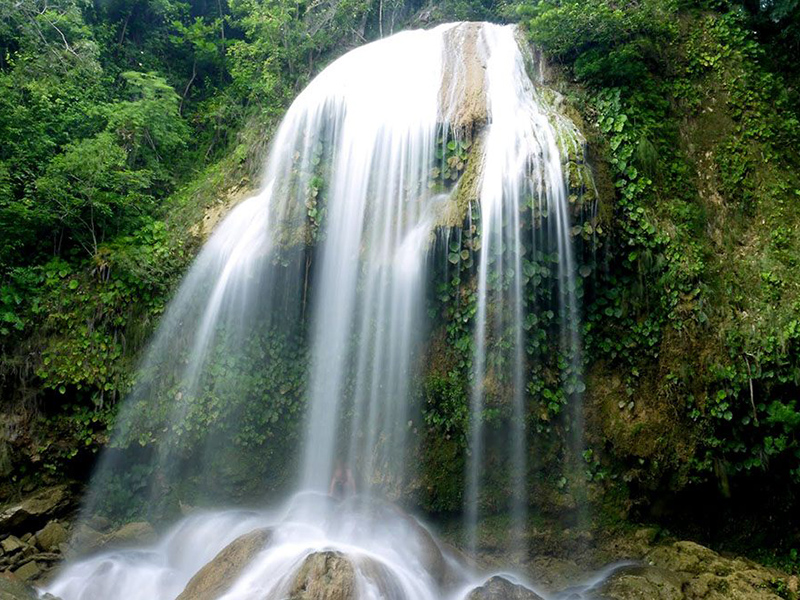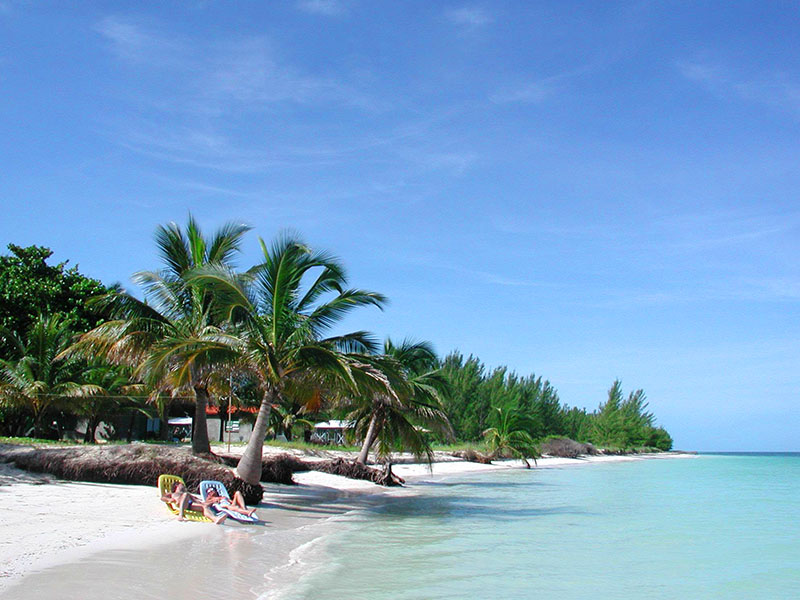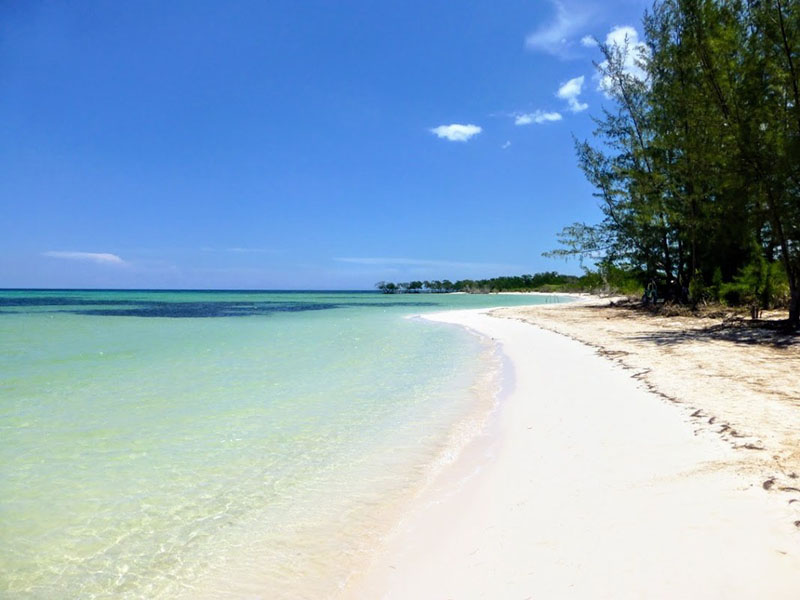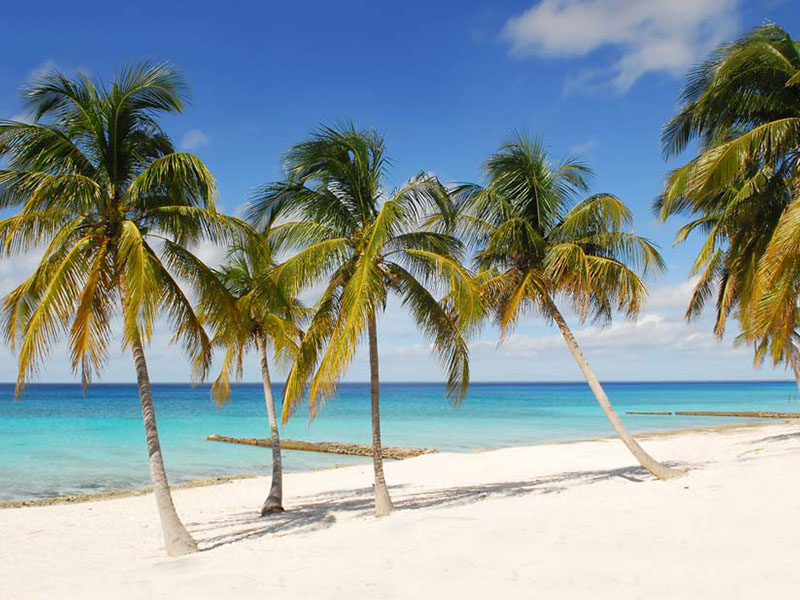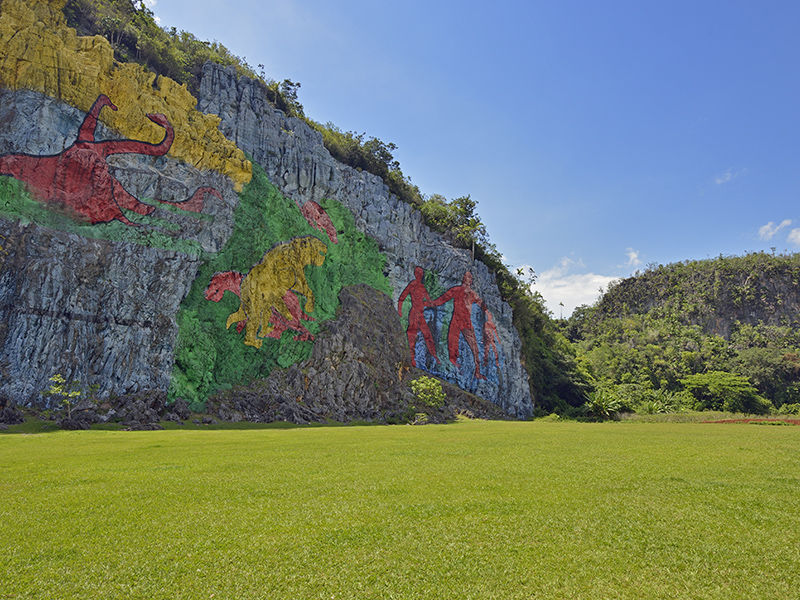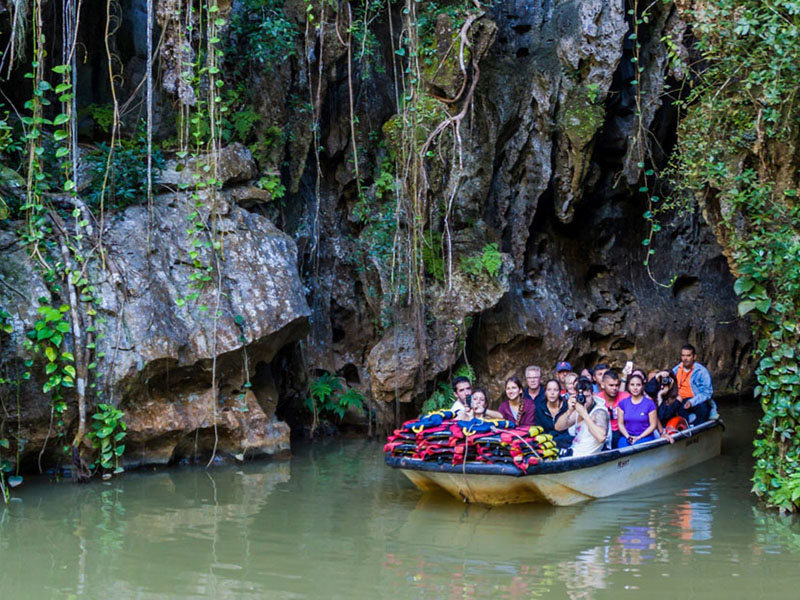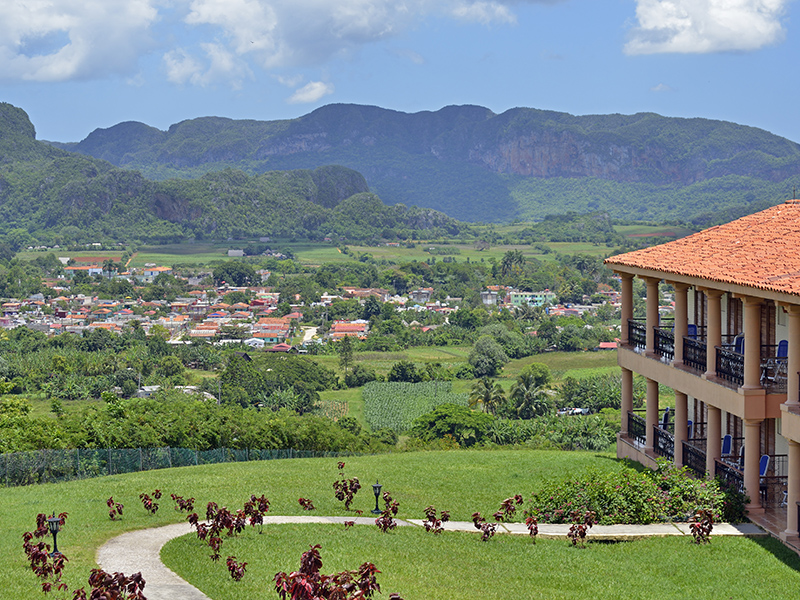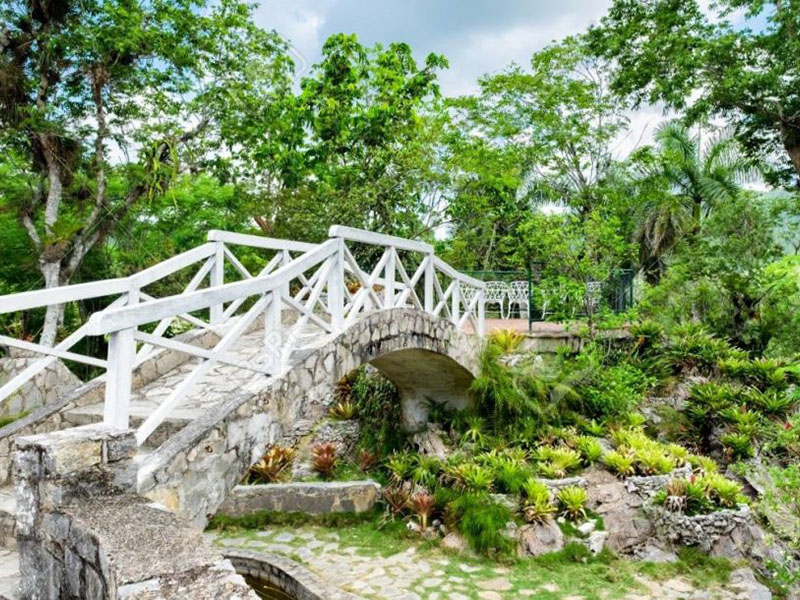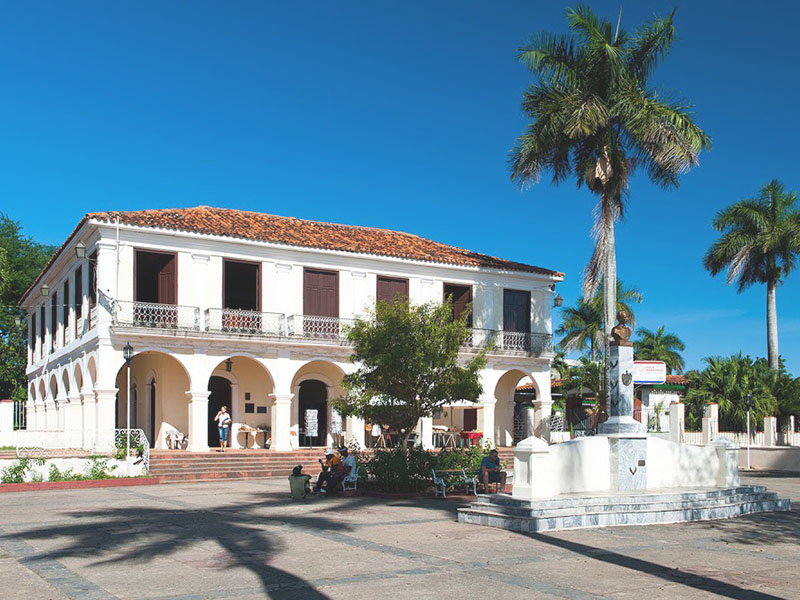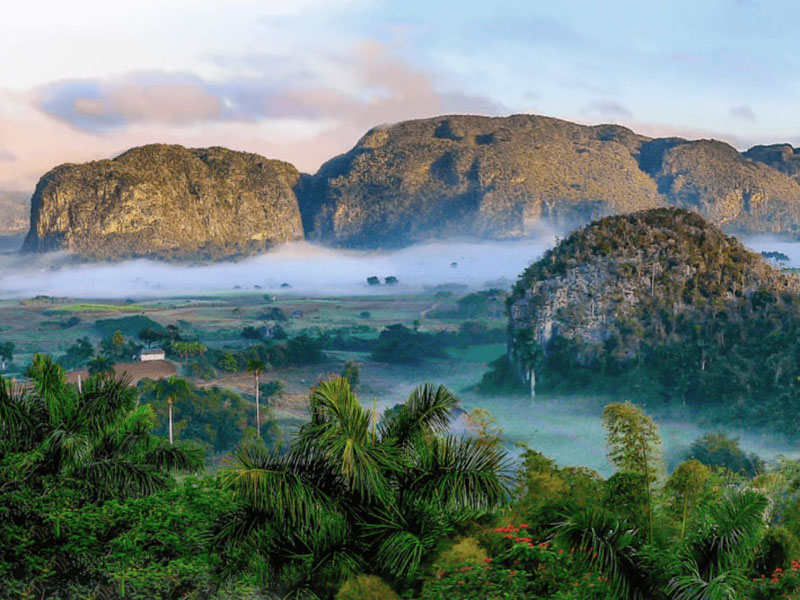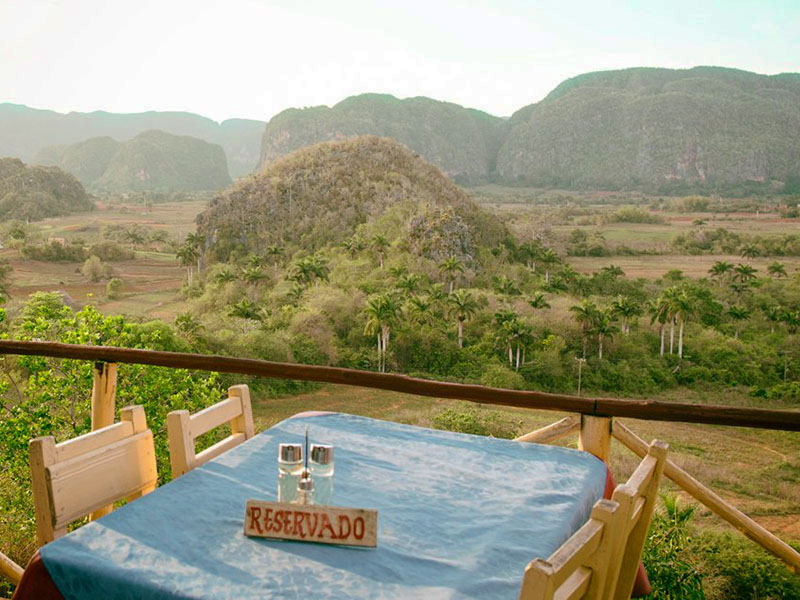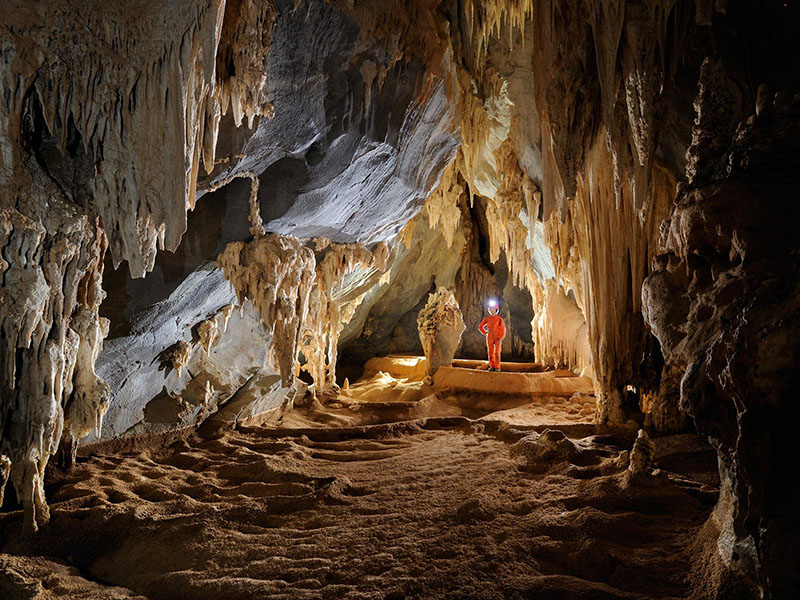Soroa
Located about 70 kms. West of Havana, specifically on teh Sierra del Rosario Biosphere Reserve. Soroa is an splendid natural destination to combine nature and rest. Among its main attractions attractions you can find the famous Orchidarium, the springs and the Water Fall, a romantic medieval building.
Cayo Levisa
More than 3 km of beach area in the North of Pinar del Río. Where you have the option of snorkeling and contemplative diving in the excellent seabed of the region.
Cayo Jutía
It is a place with an abundant costal vegetation populated with different birds, reptiles and mammal species which makes it an ideal venue for relaxing and resting. Its biggest attractions are the crystal clear beaches and the lighthouse as well as the extensive coral reef which invites to practice scuba diving and other nautical activities.
María La Gorda
Praised as one of the best Cuban zones to practice nautical sports, María la Gorda is located at the Guanahacabibes peninsula on the outmost west point of the island. Its International Scuba Diving Center has turned it into one of the best scuba diving sites. The biggest Cuban black coral reserve is also located in this area and one can observe a varied and impressive local flora and fauna .
Peninsula of Guanahacabibes
Located in the western end of the province of Pinar del Río, it has the best preserved natural landscapes of the region. It is characterized by magnificent seabeds, a rich fauna and a wide variety of interesting landscapes, including extensive mangroves, and an elevated platform where white sand and coral rocks alternate.
Prehistoric Mural
It is one of the main touristic attractions in Viñales. The painting was created in 1959 by the painter Leovigildo González and shows the evolutionary process of life in a natural sense. With 120 meters high and 160 meters wide is considered to be one of the biggest outdoor paintings in the whole world.
The Indian’s Cave
The Indian Cave is a marvelous site located in Viñales Valley. As indicated by its name it was the refuge for the first inhabitants of these lands , who painted the walls with primitive drawings that are very well-kept until today. It gives you the opportunity to enjoy a boat stroll in the subterranean river that runs through and to admire the autochthonal nature as well as the beautiful stalactites and stalagmites formation.
Viñales Valley
Declared Natural World Heritage site, Viñales Valley has a singular and formidable landscape that covers an area of 741 square kilometers with a majestic natural beauty. All through the valley you can see mountain formations known as “mogotes” taking different forms and only to be found in this part of the island. The different shades of green as well as the diversity of endemic flora and fauna is something that stands out in this territory.
Viñales’ Botanical Garden
This magnificent place is located in Pinar del Río province, specifically in Viñales. The site hosts around 1 300 endemic and exotic vegetable species that are still developing and it is believed that the garden is going to reach up to 6 000 species, practically representing most of the Cuban flora.
Polo Montañez Cultural Center
This place was named after the famous Cuban musician, composer and singer Polo Montañez, baptized as Guajiro Natural . An excellent location to enjoy the nights at Viñales. Musicians and artists playing the best of the Cuban music and its different genres, specially classics in the area such as son, cha-cha-cha, rumba and salsa, present themselves on the stage offering a truly Cuban music spectacle.
Sierra de los Órganos
Sierra de los Órganos declared National Park and World Heritage site by UNESCO is a group of mountains very close to Viñales Valley ,formed by impressive structures with rounded tops full of vegetation, known as mogotes. It is a significant region full of` surprises for the visitor, among them a varied flora and fauna and an impressive caves system .
The Viñales Valley View Point
Its excellent location turns it into the ideal place to admire the marvelous Viñales Valley landscape. At this site you are presented with an exceptional scenery characterized by the fusion between its spectacular natural beauty and the preservation of the environment where visitors will be delighted with the sunrises, the birds sing, the mogotes and the sunsets accompanied by a good Cuban coffee and an exquisite meal.
Santo Tomas Caves
With over 46 kilometers the Santo Tomás caves offer to the visitor’s eye an attractive show of colors and shapes . Declared National Monument in 1989 the Santo Tomás caves system shows a vast flora making it the ideal place for migratory and local birds to nest. On some of the walls one can see fossil remains and pictorial art examples created by the pre columbine aborigines that inhabited the region.
